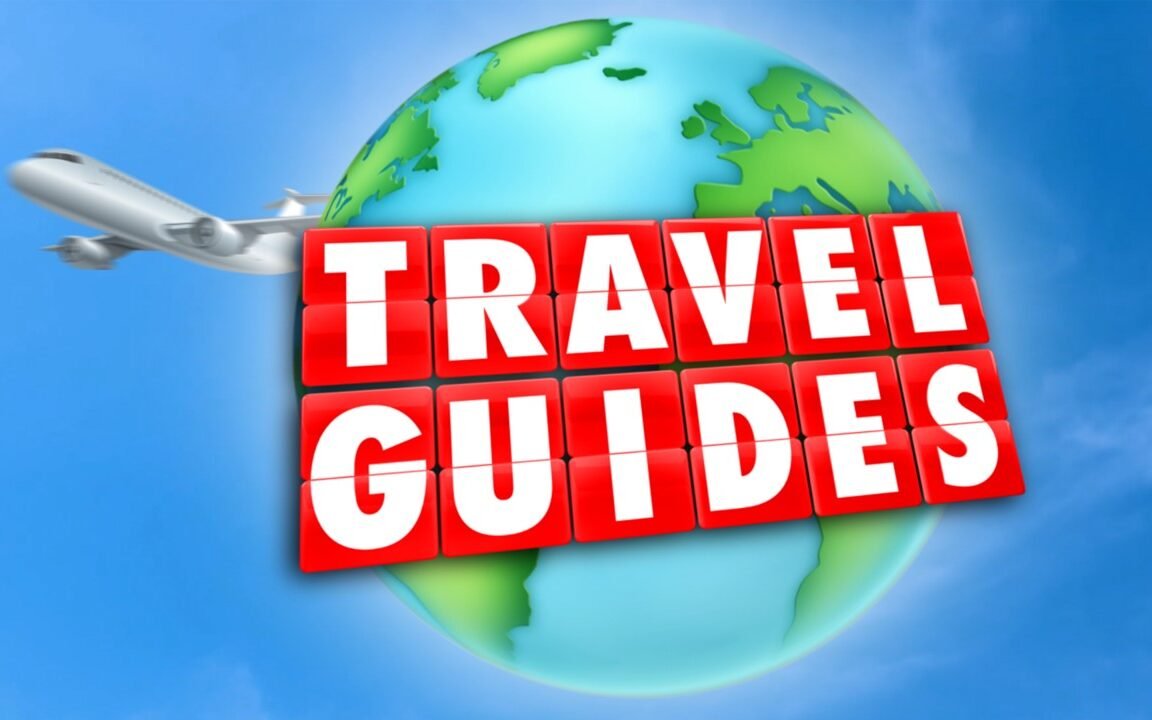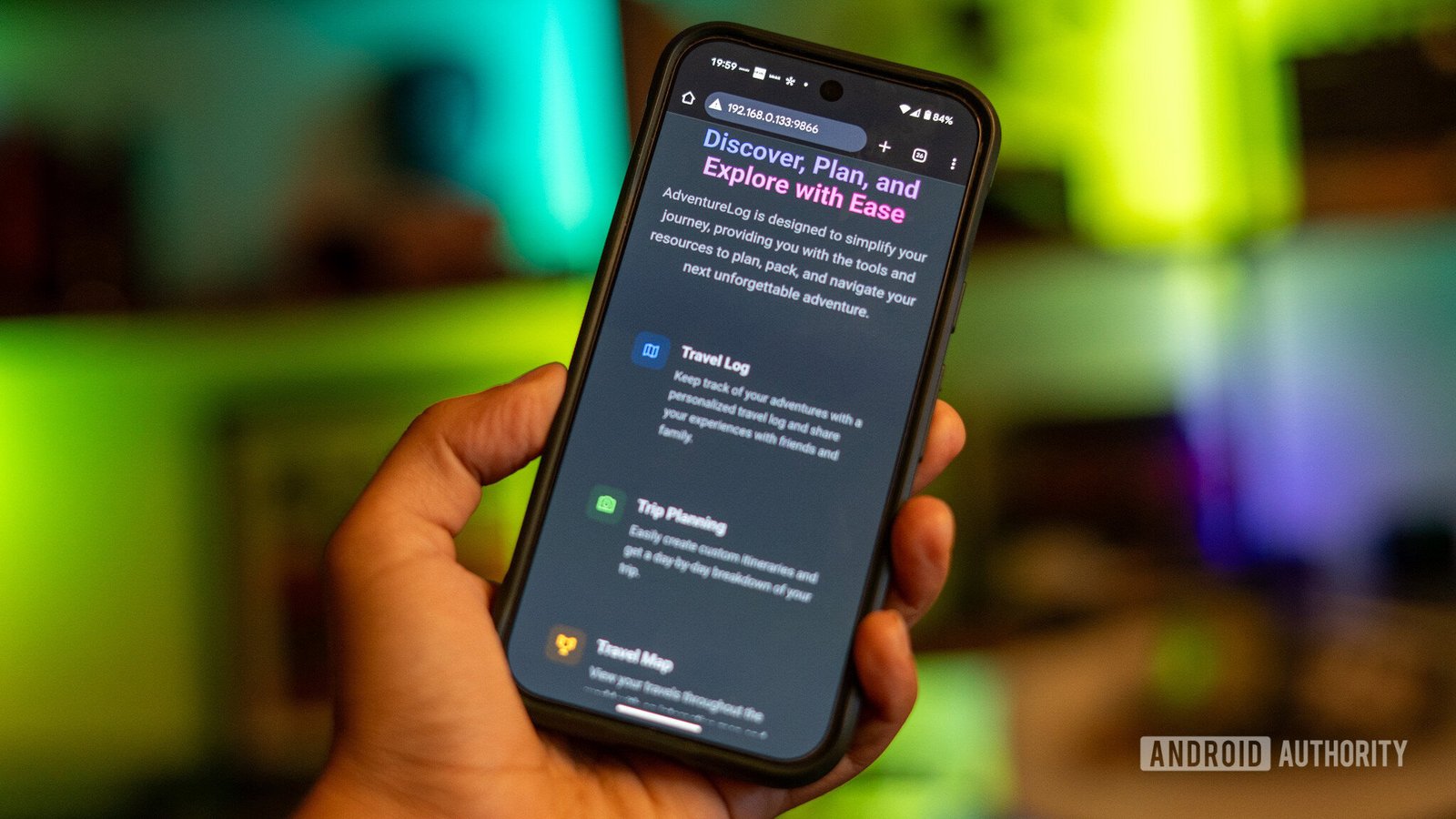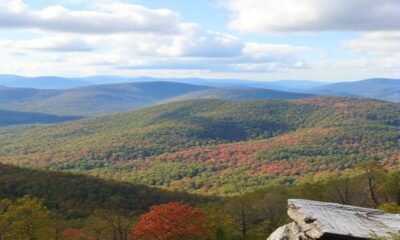Trip Planning
Brand USA Partners with Mindtrip to Launch AI-Powered Itinerary Planning Across America the Beautiful Platform for Personalized Global Travel Experiences

Monday, June 16, 2025
In a major leap for digital tourism, AI travel innovator Mindtrip has announced its latest breakthrough partnership with Brand USA, integrating its business-focused solution Mindtrip for Business directly into the newly launched ‘America the Beautiful’ website. This collaboration marks a pivotal evolution in how global travelers plan, experience, and interact with destinations across the United States, delivering seamless and inspiring travel planning powered entirely by artificial intelligence.
“The United States has so many iconic destinations worth visiting, but there are also a lot of beautiful places to see along the way,” said Andy Moss, Co-founder and CEO of Mindtrip. “By partnering with Brand USA and integrating Mindtrip’s AI solution into their website, we are making it easy for travelers to experience the most memorable getaways that are bound to drive conversation for years to come.”
With this move, Mindtrip reinforces its mission to revolutionize travel discovery, using conversational AI to make itineraries intuitive, personalized, and engaging—transforming a traditional browsing experience into a dynamic exploration journey. The integration introduces hundreds of AI-powered tools and content modules throughout Brand USA’s site, guiding visitors across iconic landmarks, immersive road trips, and culturally rich experiences from coast to coast.
AI Meets America the Beautiful
The new America the Beautiful website—an initiative by Brand USA, the nation’s tourism marketing entity—is a digital gateway for international and domestic visitors alike. Designed to highlight America’s diverse landscapes, cultures, and experiences, the platform now features Mindtrip’s embedded AI capabilities to enrich and personalize each user’s interaction.
As soon as a visitor lands on the site and starts planning their trip, Mindtrip’s AI assistant activates to offer real-time answers, destination suggestions, and inspiration tailored to the user’s preferences. Whether a traveler is curious about the best months to visit Yellowstone, the top hiking trails in the Grand Canyon, or hidden beaches along Florida’s Gulf Coast, Mindtrip’s AI responds with precision, clarity, and visual-rich context.
From Ideas to Itineraries
What sets Mindtrip apart is its ability to convert vague travel ideas into fully developed end-to-end itineraries. With just a few prompts, users receive custom plans complete with interactive maps, high-resolution images, and realistic route planning that minimizes unnecessary detours and maximizes time on the ground.
For instance, a traveler expressing interest in a Route 66 road trip will receive an itinerary spanning major attractions and charming small towns, mapped in logical sequence to enhance the travel flow. Someone intrigued by U.S. culinary culture might receive restaurant recommendations curated from local favorites rather than mainstream tourist traps. A nature enthusiast considering a camping trip in Yosemite might find their itinerary filled with suggestions to explore El Capitan, Cathedral Rocks, and nearby natural wonders—all tailored to their level of adventure.
Each itinerary is not only personalized but also collaborative—allowing users to share their plans with family and friends. This shareability serves as an organic extension of Brand USA’s audience reach, encouraging social engagement and secondary discovery through peer-to-peer interaction.
Language Without Borders
Understanding that the United States welcomes millions of international travelers annually, Mindtrip’s AI integration includes comprehensive multilingual support. The entire America the Beautiful platform—user interface, travel content, point-of-interest descriptions, and navigation tools—has been translated into six key global languages: English, Japanese, Korean, Portuguese, Spanish, and French.
This commitment to linguistic accessibility ensures that global visitors can interact with the platform without barriers, planning confidently in their native language and gaining full insight into the breadth of experiences the U.S. offers. From browsing to itinerary generation, the experience remains localized, relevant, and seamless.
A Model for the Future of Travel Tech
Mindtrip’s role in Brand USA’s digital overhaul is part of a broader trend where AI-driven platforms are reshaping tourism marketing. With travelers demanding more personalized, mobile-first, and intelligent planning tools, destination marketing organizations are embracing platforms that combine automation with creativity.
Beyond the Brand USA partnership, Mindtrip for Business has rapidly gained traction with top-tier tourism boards and destination marketing organizations (DMOs) across the Americas. The company currently collaborates with a robust network of clients, including:
- National Tourism Boards like Visit Costa Rica
- U.S. Territory DMOs such as Discover Puerto Rico
- State-Level Organizations like Visit California
- Regional Tourism Bureaus including See Monterey, The Outer Banks Visitors Bureau, and Visit Ulster County
- City-Level Destination Brands like Visit Truckee-Tahoe and Visit Atikokan
Each of these partners taps into Mindtrip’s core strength: the ability to create custom travel journeys that meet visitor needs while simultaneously supporting local businesses and driving tourism revenue.
Bridging Inspiration and Action
One of the most transformative aspects of Mindtrip’s platform is its capacity to connect inspiration with action. Travelers aren’t just discovering places—they’re guided step-by-step to book experiences, reserve accommodations, and interact with local businesses directly from their itinerary. This creates a fluid visitor journey from idea to experience, supporting the local economy and reinforcing the value of responsible tourism promotion.
Mindtrip doesn’t just show you where to go—it shows you how to go, what to do, who to meet, and how to make the most of every stop. This holistic approach enhances visitor satisfaction while helping destinations stand out in a competitive tourism landscape.
As global tourism continues its rebound, the integration of Mindtrip into Brand USA’s America the Beautiful platform signals a defining moment in how countries market themselves to the world. By combining the depth of AI personalization, the power of multilingual accessibility, and the efficiency of automated itinerary planning, Mindtrip is helping to position the United States as not only a land of opportunity—but a land of smart, engaging, and effortless travel discovery.
This collaboration showcases how advanced technology, when applied thoughtfully, can elevate the traveler experience and drive meaningful growth across the tourism ecosystem.
Trip Planning
Perillo Tours Launches Two New Italy Itineraries for 2026

Perillo Tours has added two new tours to its Italy portfolio for next year, offering longer stays in Florence and Sorrento.
“This style of itinerary is something we’ve found our guests really value,” said Steve Perillo, third-generation owner of Perillo Tours. “By anchoring the itinerary in just two Italian cities, our guests can settle in and explore each destination, and its surrounding region, in more depth.”
Gems of Italy
The new Gems of Italy tour is a nine-day trip exploring Northern Italy, with three nights in Genoa visiting Portofino, Piemonte and Cinque Terre before a four-night stay in Florence, with visits to Venice and Val d’Orcia. The trip includes experiences like truffle hunting, wine tasting, a scenic yacht cruise and more.
The tour runs from April through October, 2026 and starts at $3,695 per person.
La Dolce Vita
The second new tour is La Dolce Vita, a nine-day trip that begins with three nights in Rome before heading to Sorrento for four nights. Travelers will enjoy visiting the Colosseum, Sistine Chapel, St. Peter’s Basilica and a trip to Pompeii from Rome, before exploring Capri, Positano and other delights along the Amalfi Coast.
The trip runs from April through October 2026 and starts at $4,395 per person.
For the latest travel news, updates and deals, subscribe to the daily TravelPulse newsletter.
Topics From This Article to Explore
Trip Planning
Tonight | Travel Guides on Channel 9 and 9Now S8E10

Travel Guides on Channel 9 and 9Now S8E10 – Our Guides enjoy a motorhome road trip through rural NSW. From the rugged beauty of the Blue Mountains, to racing cars around Bathurst’s Mount Panorama, and donning a jumpsuit for the Elvis Festival in Parkes, this trip will have them all shook up.
Country NSW
Travel Guides on Channel 9 and 9Now – Sunday 20 July at 7:00pm
TV Central Nine content HERE
Travel Guides on Channel 9 and 9Now S8E10
Trip Planning
This self-hosted travel app has completely changed how I travel

Dhruv Bhutani / Android Authority
Travel has always been a huge part of my life. Whether I’m planning a weekend getaway for a hike or a longer multi-country backpacking trip, I’ve relied on travel apps to help keep things organized. But after years of using some of the best travel apps like Wanderlog, TripIt, making notes in Google Keep or Notion, or even maintaining a pen and paper journal, I realized they all came with frustrating trade-offs. Too many ads, pushy upgrade prompts, opaque subscription models, lack of features, and most worryingly, an always-on stream of data collection and tracking. For something as personal as travel, that’s something I really don’t want.
So earlier this year, I started looking for alternatives. I wanted something lightweight, customizable, and private. If it was self-hostable and open source, even better. Turns out, there really is an open-source project for every need. That search led me to AdventureLog, a self-hosted, open source travel tracker and itinerary manager that’s as functional as it is privacy-respecting. I installed it on my Synology NAS with Docker, and it has completely changed how I travel and plan trips. Here’s how.
Planning without the noise
Dhruv Bhutani / Android Authority
The first time I really put AdventureLog through its paces was on a weeklong trip to Prague. It’s a city I’ve always wanted to revisit, not just pass through. So, with one of my favorite bands performing in the city, it made sense to plan a vacation around it. I wasn’t interested in joining pre-planned walking tours or sticking to an optimized route of “top 10 things to see.” I wanted to keep a free-flowing itinerary with some sights I wanted to see, open-ended enough to go with the flow, while keeping track of the smaller discoveries for a future trip.
Before leaving, I created a new trip in AdventureLog. I added a rough outline of the week, including basics like arrival times, my Airbnb location, and a few scattered bookmarks of places I’d read about. A tucked-away cafe near Letna Park, a record store in Vinohrady, and a speakeasy bar in the Old Town that only locals seemed to talk about online. What was different this time wasn’t just how I planned the trip, but how the tool I was using actually stayed out of the way. There was no clutter, no offers, no pop-ups, no ad-driven suggestions for other things I might want to do. Just a timeline and a clean map interface.
AdventureLog behaves more like a super-charged travel journal than yet another travel app.
All that might sound like a standard travel planning app, but AdventureLog gets a bit more interesting. It also functions as a travel diary. Each day, I logged entries as they happened. Cinnamon buns for breakfast, a random, unplanned visit to the Klementinum library that felt like stepping into a movie set. Or a long walk by the river. The act of logging things in the moment felt like capturing the flavor of the day, the kind of thing that would usually go in my diary and that I’d never preserve in Notion or a basic checklist. By turning the travel app into a travel journal, AdventureLog has become a tool I use a couple of times a week, versus only when I’m planning a trip.
When used to its full potential, AdventureLog can create a personal archive of your trip, complete with notes, places, and impressions. Something few other travel apps can achieve.
Organize, reflect, revisit — All in one place
Dhruv Bhutani / Android Authority
AdventureLog is deceptively simple, but the more I used it, the more I appreciated the depth it offers under the hood. Built with modern tools, it runs fast and reliably even on minimal hardware. The interface is responsive enough to feel like a native app, whether I’m on a laptop or checking it from my phone during a layover.
Dhruv Bhutani / Android Authority
Each trip becomes its own timeline. You can add a name and cover image, then start building out daily logs. The text fields support Markdown, which I found surprisingly useful for structuring my notes. I’m used to Markdown from my notes apps, so it just made text formatting that much quicker. I use it for everything from quick restaurant recs to more reflective journal-style writing. Tags let you group entries across trips, and the integrated OpenStreetMap view ties everything together visually. The nice part about it all is that it’s all optional. You can categorize as much or as little as you want. You don’t need to know how to use a complex database or fiddle with formatting — it just works.
For the first time, I wasn’t switching between multiple apps to get through the day.
One of the things I’ve come to love is how easy it is to glance back and get a bird’s-eye view of my travel history. With other apps, things get siloed with a one trip per doc style, or half-written entries scattered across different platforms. With AdventureLog, everything is in one place. I can scroll through months of travel, click into a trip, and instantly drop back into that headspace. It feels more like a living archive than a planner, especially when coupled with the built-in calendar that gives me a bird’s eye view of upcoming trips.
And because it runs entirely on my own server, nothing leaves that space unless I export it myself. There’s no data collection, no cloud sync to opt out of, and no analytics running quietly in the background. If you’re interested in self-hosting, you probably value that just as much as me. By default, I can only access it on my home network. However, I’ve configured a remote proxy as well for on-the-go access.
If the idea of self-hosting sounds intimidating, it’s not. The installation process for AdventureLog is one of the smoothest I’ve encountered. I used Docker on my Synology NAS, but it runs just as well on a Raspberry Pi, home server, or cloud instance. The documentation is detailed and clear, with effectively a single Docker command that pulls the image, sets up your data and media folders, and gets the app running on your local network.
On my setup, I mounted everything to Volume 2, which is where my Docker install lives, and exposed the right ports for the container. Once I opened it in my browser, AdventureLog walked me through creating my account and setting up the first trip. No dependencies to figure out, and no need to register for any third-party APIs. The app is fully self-contained.
There’s no official mobile app, but the responsive design makes it feel at home on any screen size. If you prefer, you can add it to your homescreen as a shortcut. That’s what I’ve done. I use Tailscale to access my NAS while traveling, but you can just as easily expose it via a reverse proxy, like the one built into Synology NAS drives.
Reclaiming the joy of travel planning
Most travel apps are built around a business model, not your travel needs. Even the most polished ones are ultimately there to sell you something. It could be flights, hotels, local tours, a premium tier, or in many cases, your own data. If you just want a tool to plan and document your trips, these apps can often feel cluttered and overdesigned. Those are the last things you want to deal with when on the road. AdventureLog is the opposite. It doesn’t try to sell anything. There are no ads, no feature limits, and no pop-ups asking you to upgrade. It gives you a clean, functional space to plan trips, take notes, and revisit past travels. That simplicity is what makes it more useful than most commercial alternatives for me.
-

 Brand Stories12 hours ago
Brand Stories12 hours agoBloom Hotels: A Modern Vision of Hospitality Redefining Travel
-

 Brand Stories12 hours ago
Brand Stories12 hours agoHow Olive Group of Hotels Is Redefining Wellness Travel in India—And Why the World Is Watching
-

 Destinations & Things To Do1 day ago
Destinations & Things To Do1 day agoUntouched Destinations: Stunning Hidden Gems You Must Visit
-

 AI in Travel1 day ago
AI in Travel1 day agoAI Travel Revolution: Must-Have Guide to the Best Experience
-

 Brand Stories2 weeks ago
Brand Stories2 weeks agoVoice AI Startup ElevenLabs Plans to Add Hubs Around the World
-

 Brand Stories1 week ago
Brand Stories1 week agoHow Elon Musk’s rogue Grok chatbot became a cautionary AI tale
-

 Asia Travel Pulse2 weeks ago
Asia Travel Pulse2 weeks agoLooking For Adventure In Asia? Here Are 7 Epic Destinations You Need To Experience At Least Once – Zee News
-

 AI in Travel2 weeks ago
AI in Travel2 weeks ago‘Will AI take my job?’ A trip to a Beijing fortune-telling bar to see what lies ahead | China
-

 Brand Stories2 weeks ago
Brand Stories2 weeks agoChatGPT — the last of the great romantics
-

 The Travel Revolution of Our Era1 month ago
The Travel Revolution of Our Era1 month agoCheQin.ai Redefines Hotel Booking with Zero-Commission Model












